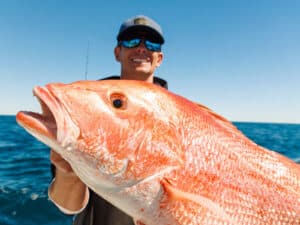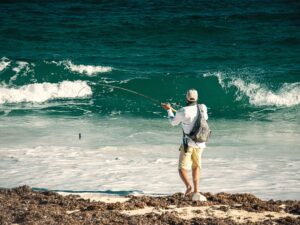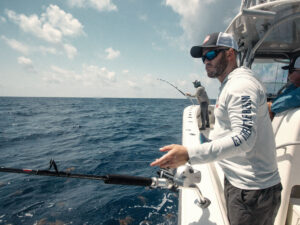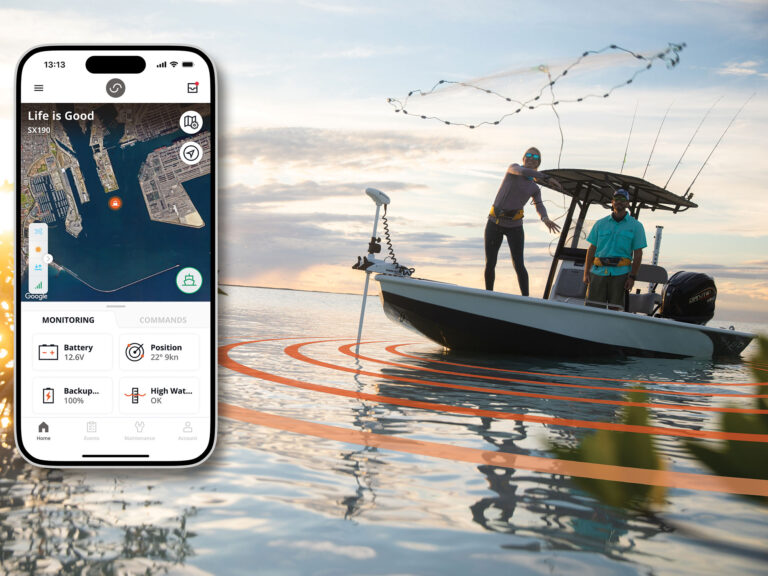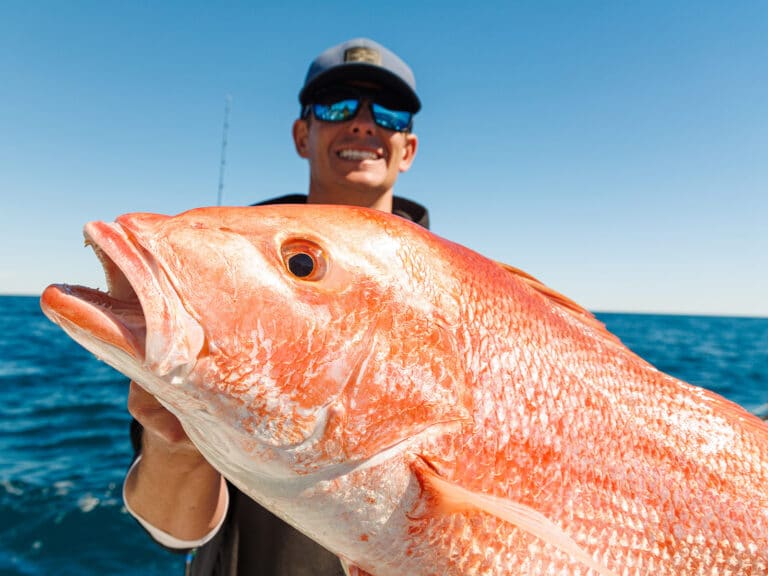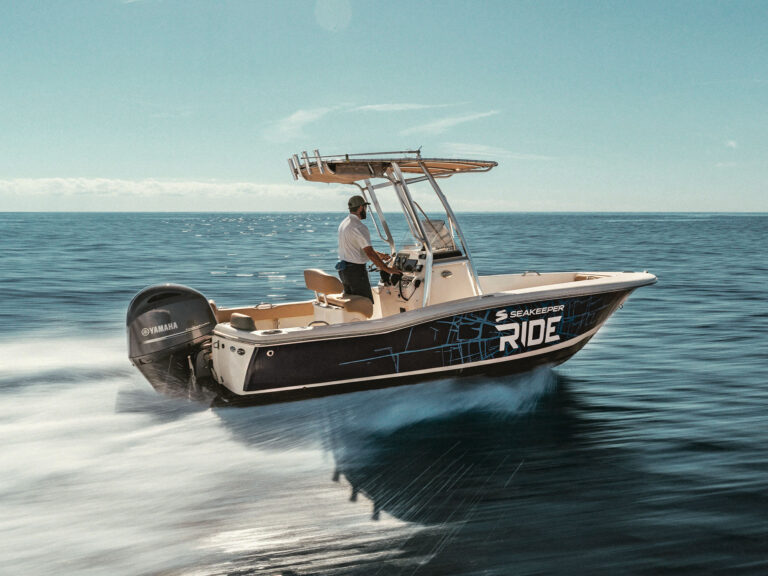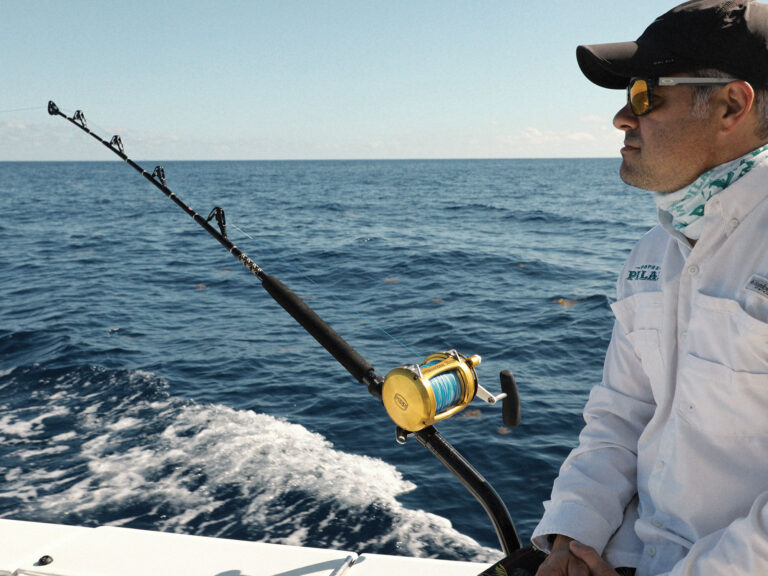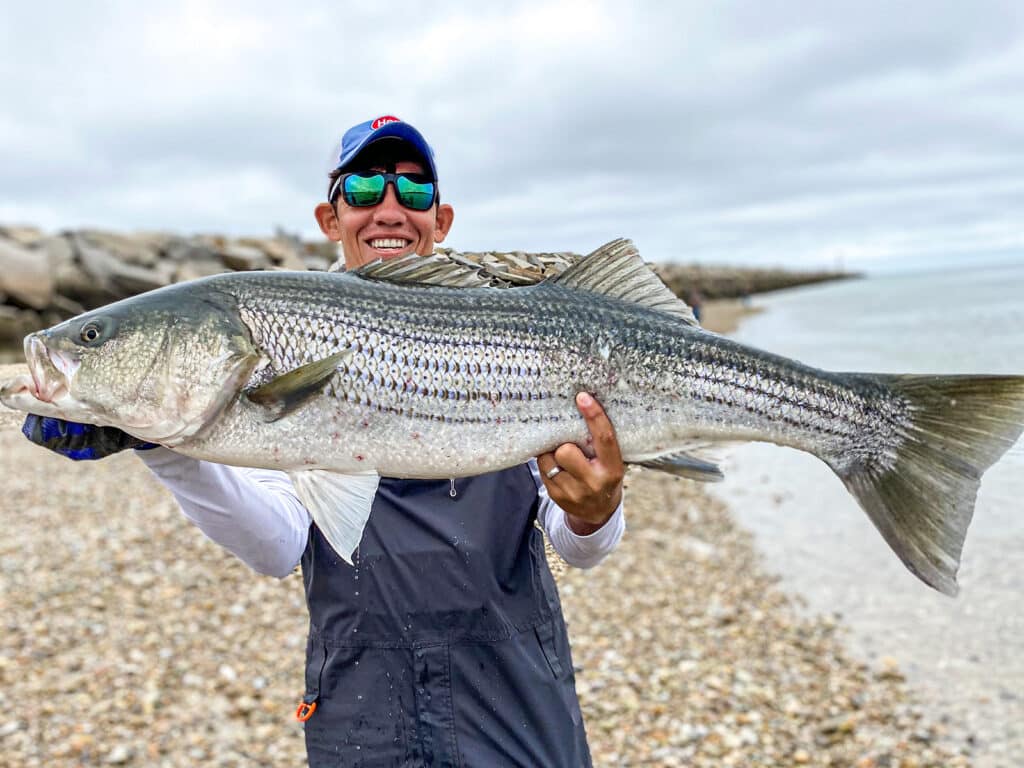
The Cape Cod Canal is one of the most popular, infamous land-based striped bass fishing spots in the Northeast. In total, the stretch runs seven miles of rocky shoreline, ripping currents, and a world of possibilities. The manmade waterway connects Cape Cod Bay to Buzzards Bay.
It’s popularity is obvious for a host of reasons. Most importantly, it’s accessible to non-boaters. The Atlantic striped bass use the canal as a shortcut during their annual migration. As opposed to going around the outside of Cape Cod — a much longer route — stripers save time and energy utilizing the strong currents to move north and south. With depths of up to 50 feet, not fishing from a boat, and tons of spots to choose from, the legendary canal can be an intimidating landscape. We want to help you tackle it. Here are five things you must have to fish the Cape Cod Canal.
Studded Boots for Fishing the Rocks
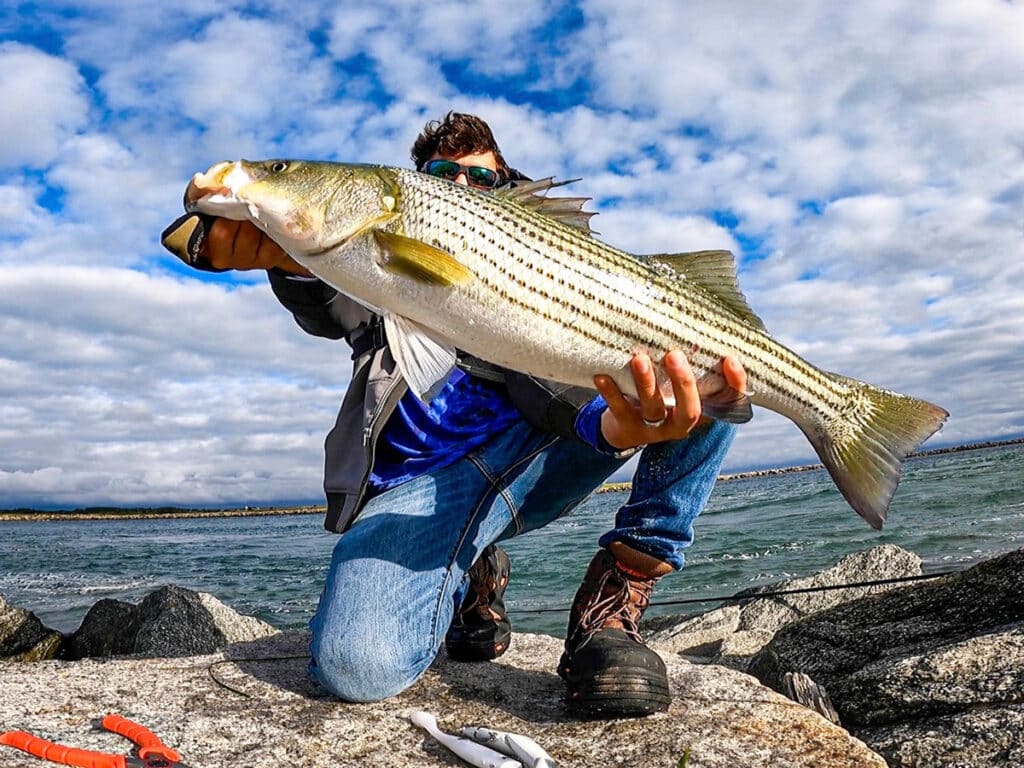
Let’s start with something that may not seem like an obvious piece of fishing gear, but is paramount when fishing the Cape Cod Canal — a nice set of studded boots. Many people visiting the canal, or the Northeast in general, don’t realize how large the tidal swings are on a daily basis. We are talking about differences from 6 to 12 feet depending on moon phases, time of year, and plenty of other variables. With such large tidal swings, this means that much of the rocky terrain that anglers use to cast and fish from is exposed to water on a daily basis. This exposure makes the terrain in the canal extremely slippery and surprisingly dangerous. Much of the shoreline is littered with rocks that can be as slick as an icicle.
Studded boots, from makers such as Korkers, give you the traction you need to land those big fish and, most importantly, stay safe. The drop-offs in the canal are huge and the current rips are no joke — it’s not a place you want to take a chance. The jetties are tall and looming, so safety is paramount.
Fish Grippers to Handle Striped Bass
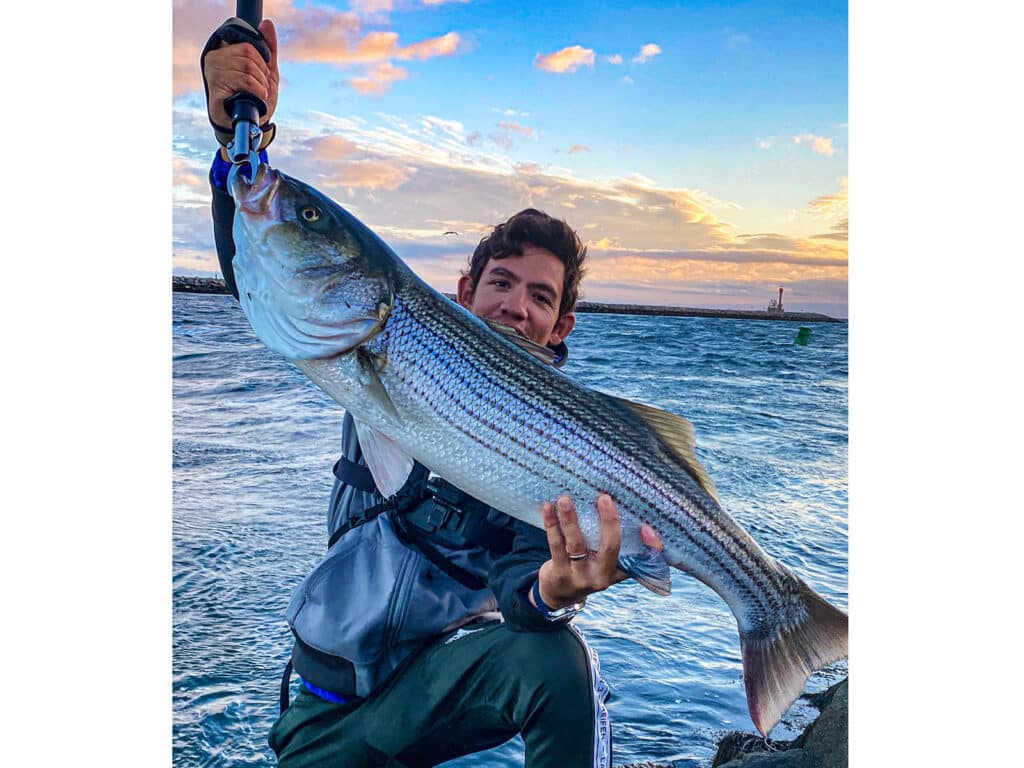
Fish grippers are another tool that may slip many anglers’ minds, especially people who are used to fishing from beaches or boats. With the terrain you’ll be fishing from, to be able to safely land a fish, you want a pair of reliable fish grippers. Although it may not seem important, when you go to land that trophy striped bass, you have to climb down to get it. You’re going to be super happy to have those grippers. The grippers will also help you avoid taking a treble to the hand. Many of the baits people commonly use to fish the canal have large trebles. The grippers are vital to avoiding one of those hooks ending up in your hand.
Here are three lures I always have when targeting striped bass and bluefish in the Cape Cod Canal.
A 9-Inch Topwater Spook Lure
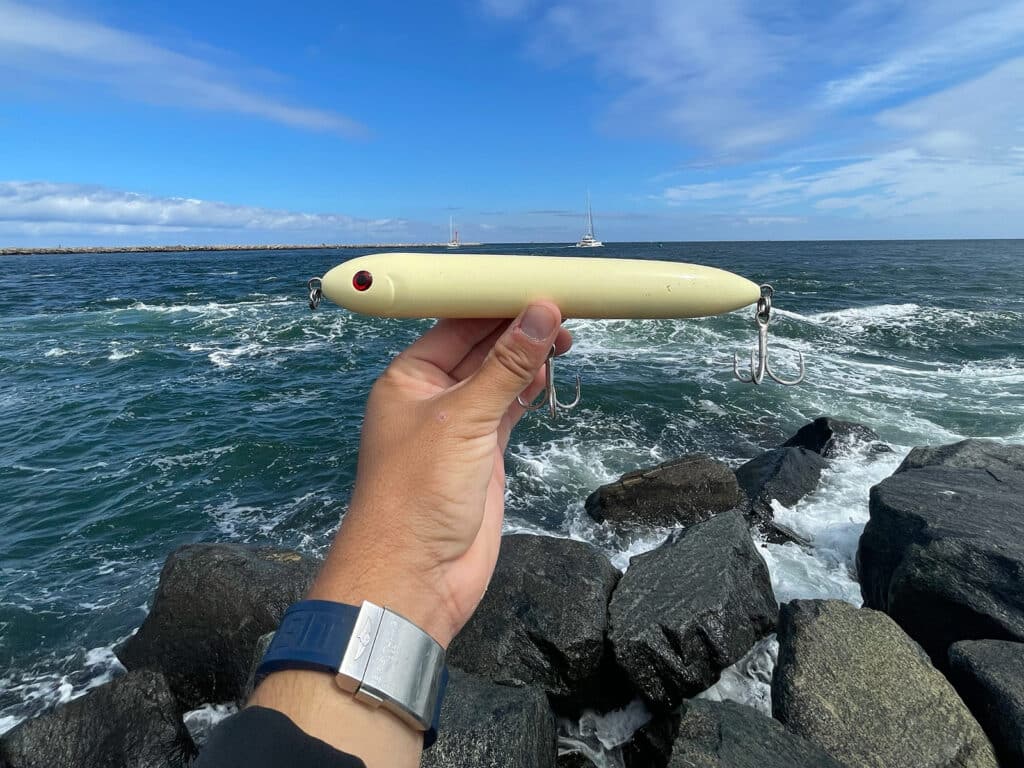
When it comest to lures, I want options to cover all parts of the water column. We want to fish the top,
middle and bottom to be successful. To cover the top, you’re going to need to tie on a 9-inch topwater spook. The color is not as important as the length. The striped bass and blues that come into the canal are feeding on three things: green mackerel, bunker or sand eels. Bass typically focus on the larger profile baits. To properly replicate that, you’re going to want a larger spook. Not only will the larger profile help “match the hatch,” it will also allow you to cover greater casting distances.
The Magic Swimmer Swimbait Lure
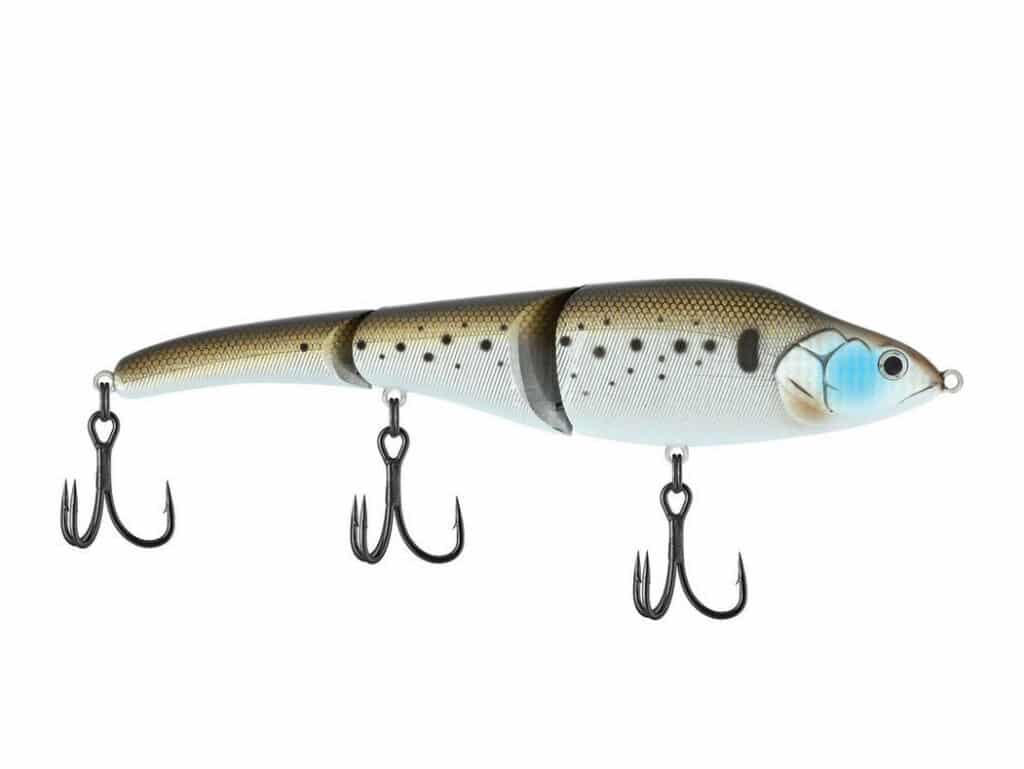
The Magic Swimmer could be the most prolific canal bait. This one lure has been responsible for more stripers than arguably any other lure in the Cape Cod Canal. It’s a hard plastic swimbait that is attached together by wire, similar to a glide bait. Berkley makes slow sinking and fast sinking variants. My recommendation is to always use the heavier fast sinking option so that you can cover more water.
If you need to retrieve the lure closer to the top, you can hold your rod in a more elevated position and retrieve faster. If you need to go lower in the water column, you can retrieve it slower. The depths in the canal vary, but they average greater than 20 feet. This bait is not meant to get to the bottom. The benefit of this bait is that you can do a straight retrieve against the ripping current. The action really stands out in the current, so stripers and blues love it.
The Savage Gear Sand Eel Lure
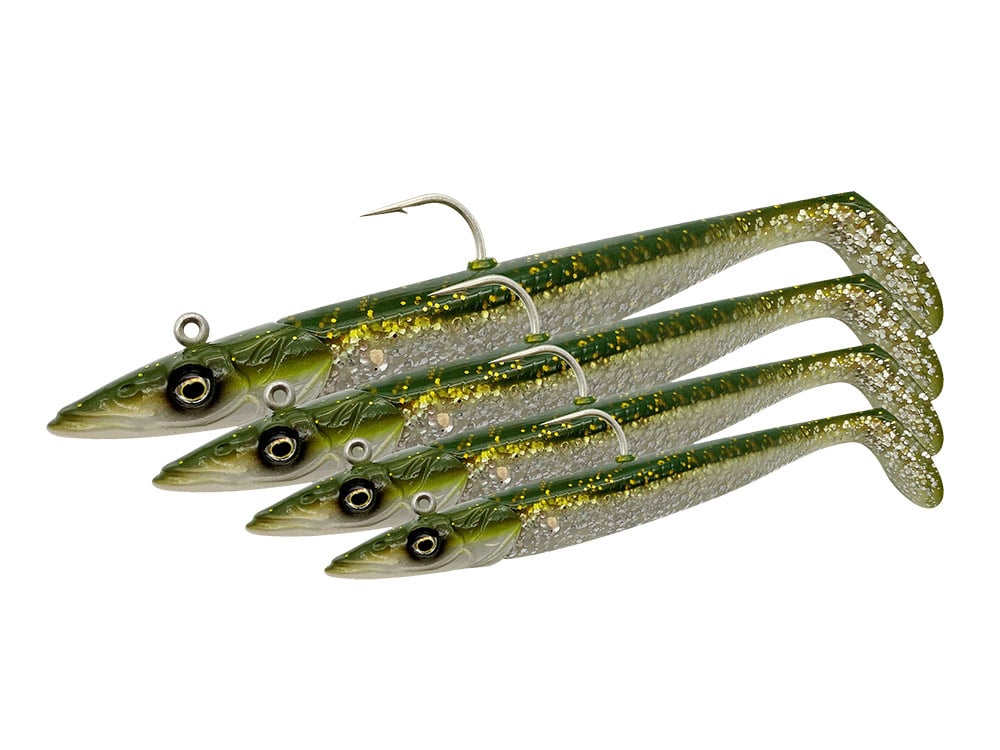
The Savage Gear Sand Eel is another icon of the Cape Cod Canal. Use the green mackerel color. This is a swim bait that incorporates a jig. A heavy jighead paired with a sleek, soft plastic paddle tail allows this bait to get to the bottom. With the currents and depths you’ll experience, bouncing bottom can be very hard to do at times in the canal. This swimbait is 5.33 ounces in weight, but you need that weight to get down to the bottom.
What makes this lure so good? Why so specific on color and size? Let’s start with why it’s so good.
Get Your Fishing Accessories Now
The shape of the jighead on this swimbait cuts through current and sinks faster better than other baits. When it hits bottom, it’s meant to hit with the head down and the tail up. This movement replicates what sand eels do. They dig their nose in the sand and a striper typically eats them from the back. If you’ve ever seen striped bass eating sand eels in shallow water, they use their nose to dig them out of the sand and slurp them up. The color and size are important because, although this is meant to work on the bottom and replicate a sand eel, you are replicating green mackerel — another striper favorite in the canal.
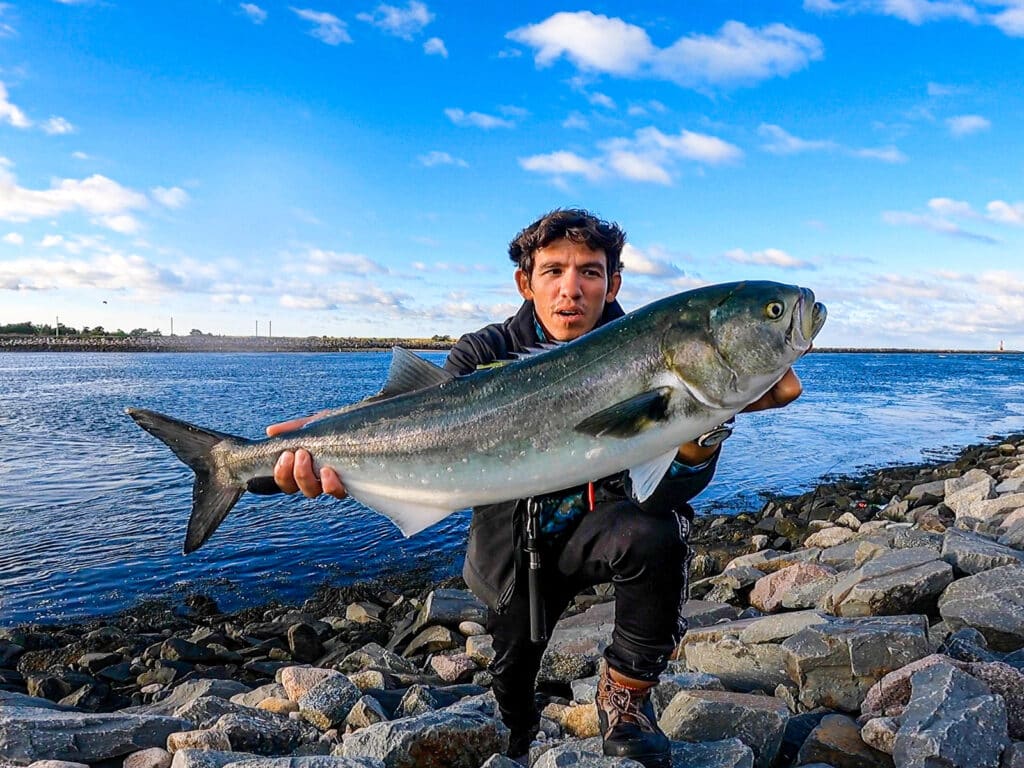
Use these three lures at the Cape Cod Canal to catch trophy striped bass and blues. The best times to go vary year to year but traditionally, my favorite time is June and September. In June, the stripers are typically migrating north. In September, you can catch the fall run as they migrate south.

